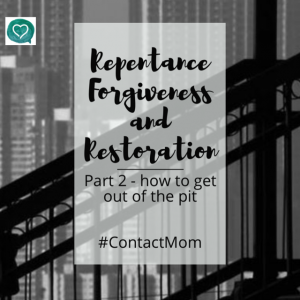A Kingdom Principle that Brings LIFE to your Family
posted in: Heart Training, Moral Training
0
Is it possible for siblings to be best friends? We think so. The number one tool we learned from Growing Kids God’s Way that fostered this friendship and has continued their friendship into adulthood is Repentance – Forgiveness – Restoration (R/F/R). Life happens and we wound one another along the way, sometimes intentionally, sometimes unintentionally. Until we taught our children how to deal with those wounds, there were broken bridges in their relationships. Our oldest son ministers to troubled youth and one of the first steps of his training was exploring broken family relationships. He was grateful we had required R/F/R in our family so that he didn’t have divisions that needed to be overcome. Many of his fellow students had broken sibling relationships that needed to heal before they could begin to help the youth who would be assigned to them. Another one of our sons shared that his relationship with his siblings formed the picture of the kind of friendships he and his wife were looking for when they moved to a new community. God’s ways are a good prescription for life and He did a beautiful thing in our family as we applied His principles of R/F/R. We haven’t done it perfectly, but we’ve had a target to aim for. His mercy and grace have made up the difference.
What does sibling offense look like?
When one sibling does or says something (or neglects to do or say something) that offends the other one, the bridge of fellowship is damaged or broken. Offenses might include hitting, yelling, sarcasm, laughing at the other one, taking another’s possession, destroying something that belongs to the other person, or refusing to talk, play, or be around the other person. You get the idea. Maybe you have an angry child who reacts to a sibling harshly or resists your leadership. These are clues that something is going on below the surface. I don’t think our house was the only one with these kinds of problems. As the parent, sometimes I knew what had happened, but sometimes the bridge was damaged and I only saw the fallout.
Helping siblings walk through R/F/R
In our home, making things right was not optional. For children as young as 4 years old, we began to teach, coach, and guide them through acknowledging their sin, asking for forgiveness, forgiving, and restoring the relationship. Once the process was understood, practice helped further cement the principles of R/F/R in their hearts, and we had plenty of opportunities to practice! Until the child was ready to walk through R/F/R, he didn’t have the freedom to go anywhere or do anything else. Time alone to reflect on his part of the rift was often helpful. Rather than teaching them together, I usually found it beneficial to separate the siblings to help them process individually and then bring them back together. A prayer like, “Lord, You see and know all things. Help me navigate the relational mess we have now” invited Wisdom to guide me. As the parent, I may have needed to help our children prepare for R/F/R with a sibling by asking questions to direct their thinking like: “What did you do or say in this situation?” “How would you feel if you were your sibling?” “What do you think you need to do to make this right?” The problem was seldom one-sided. In the training years, we role-played between the parent and child before we walked through R/F/R between siblings. As they grew in their understanding of why this process was important, they did it on their own. Many times I didn’t even know it happened, but I experienced the peaceful fruit of righteousness in our home.
Is it worth the effort to train your children in R/F/R?
Teaching R/F/R is time consuming, but we realized we were training our children in a life skill and it was worth the investment of our time and attention. If your children don’t have a good relationship with one another, then family gatherings will lack the love, laughter, and togetherness you long for. Not only did R/F/R help our children become and remain friends, but they learned a valuable tool to apply in other friendships and their future marriages. One of our daughters-in-law shared with me how the first time her fiancé humbled himself and confessed, “I was wrong when I . . .” she was taken aback. She didn’t remember ever experiencing this in her family. She was surprised how easy it was to forgive and how quickly the wound was healed. Parents, we aren’t parenting only for today. The truths we impart to our children today have a generational and a Kingdom impact.
Where else can you use R/F/R?
If your children are too young to apply R/F/R, then take the principles and use them in your marriage. You can also use them with your child when you get angry or harsh with him. Confess and repent of your sin; ask the child to forgive you; and do or say whatever it takes to communicate “You are valuable, and I want you to know that our relationship is important” to restore the relationship. As you walk through R/F/R, you will be modeling for the little people in your home a Kingdom principle that brings LIFE!


